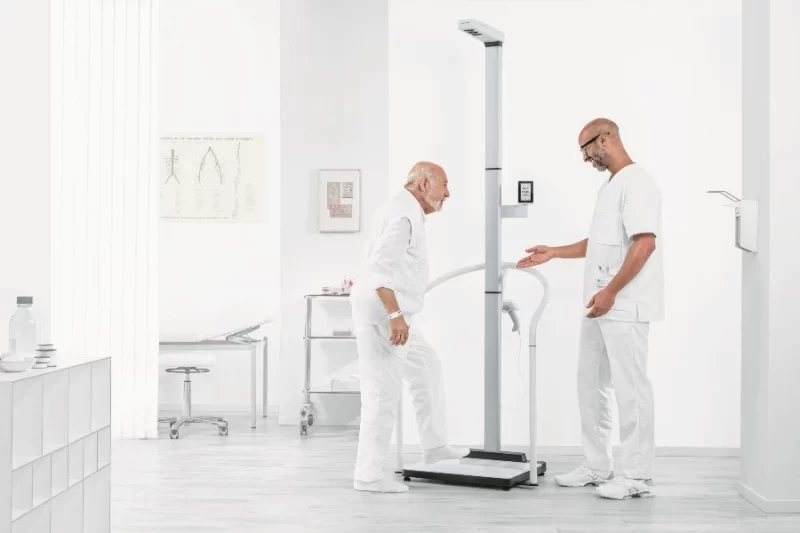Hormone replacement therapy (HRT) is a popular and effective way to treat certain medical conditions, such as menopause symptoms, infertility issues, and pre-cancerous endometrial tissue growth.
But did you know that there are several different forms of hormone therapy available? From traditional hormone replacement treatments to more natural alternatives like herbal supplements or lifestyle changes – how do we decide which one is the most effective and safe?
In this blog post, we’ll explore the benefits and drawbacks of each form of hormone therapy so you can make an informed decision about your health.
What Are The 4 Main Types Of HRT?
Hormonal replacement therapy (HRT) is a safe, effective and popular form of treatment for various medical conditions such as menopause symptoms, infertility issues, pre-cancerous endometrial tissue growth and more.
The four main types of HRT are:
- Traditional hormone replacement therapies are the most common form of HRT and include taking estrogen or progesterone drugs by mouth or through a patch or cream. This method of HRT has been around for decades and is used to relieve menopausal symptoms and reduce the risk of osteoporosis in postmenopausal women.
- Hormone gels and creams are a relatively new form of HRT, and are becoming popular as an alternative to traditional oral medications. These products, such as Somaderm Gel, claim to contain hormones that can be applied directly to the skin, allowing for more localized and efficient hormone delivery.
- Bioidentical hormone therapy is another form of HRT that uses plant-based hormones (usually derived from soy or yams) to replicate the hormones naturally produced by the body. This method has been growing in popularity, as it is seen as a more natural alternative to traditional HRT.
- Pellet-like implants are an increasingly popular form of HRT. A pellet-like implant is inserted under the skin and slowly releases hormones into the body over a 3 to 6-month period. Unlike other forms of HRT, the effects of these implants can last for months.
How Safe And Effective Is HRT Therapy?
When it comes to hormone therapy, the answer isn’t always clear. While HRT is commonly used to treat menopausal symptoms, it can also be beneficial for other conditions such as osteoporosis or prostate cancer. But like any medical treatment, there are both potential benefits and risks associated with HRT.
The first thing to consider when weighing the safety of HRT is understanding who may benefit from this type of therapy. Generally speaking, women going through menopause may feel relief from hot flashes and night sweats by taking hormones like estrogen or progesterone that replace those lost during menopause.
It’s important to speak with your doctor about your individual needs before starting any form of hormone therapy so they can provide you with tailored advice based on your health history and lifestyle factors.
In addition to considering whether a patient could potentially benefit from HRT, doctors must take into account how safe the treatment is for their patients as well. Though studies have suggested that certain types of HRT may increase a woman’s risk for stroke or breast cancer if taken over an extended period of time.
These findings aren’t definitive and more research needs to be done in order to fully understand the risks involved in using hormones as part of medical treatment plans.
Whether someone decides that hormone therapy is right for them depends on many different factors – including age, general health status, personal preferences about medications and more.
What Is The Best Form Of Hormone Replacement Therapy?
The best form of hormone replacement therapy depends on the individual needs and preferences of each patient, as well as their doctor’s advice. Each form of HRT has its own benefits and drawbacks, so it is important to consider all the options before making a decision.
Some forms of HRT, such as oral medications or hormone creams may be the best option for some patients, while other forms of HRT, such as pellet implants or bioidentical hormones may be more suitable for others.
Which is better bioidentical or synthetic hormones?
For years, doctors have argued over whether bioidentical or synthetic hormones are the better option for hormone replacement therapy. Both types of hormones can be used to treat a variety of issues related to aging and hormonal imbalances, but which is really the safest and most effective?
The primary difference between bioidentical and synthetic hormones lies in their chemical structure. Synthetic hormones are designed to mimic human hormones, while bioidentical ones are identical in molecular structure to what your body produces naturally. Because they’re so similar, many people believe that bioidenticals are safer than synthetics. However, this isn’t necessarily true.
This has led many doctors to recommend using a combination of both types – synthetic initially followed by gradually introducing more natural forms as you adjust – rather than relying solely on one option or another.
What Age Is Best To Start HRT?
When it comes to starting hormone therapy, there is no one-size-fits-all solution. The right time to start HRT depends on your individual needs and goals, as well as the advice of your healthcare provider.
Most people begin HRT when they reach menopause or andropause, which usually occurs between 45–55 for women and 40–50 for men. Women may consider estrogen replacement therapy if they are experiencing signs of low estrogen such as hot flashes or night sweats.
Men may consider testosterone replacement therapy if they’re having trouble maintaining muscle mass, libido, or energy levels due to decreasing testosterone with age.
However, some people may choose to start earlier than that especially if their hormones are out of balance from a young age. Or after undergoing surgical procedures like mastectomy or hysterectomy which can cause an abrupt decrease in certain hormones like estrogen.
This type of medical treatment requires specialized care and should only be done in consultation with a doctor who has experience prescribing HRT so patients can get the right dosage and timing specific to their unique situation.
Conclusion
Hormone replacement therapy can be a powerful tool for managing the symptoms of aging and hormonal imbalances. However, it’s important to understand all the different options and potential risks before making a decision.
Different forms of HRT come with their own benefits and drawbacks, so it’s important to work with your doctor to find the right option for your individual needs and goals. There is no single best age to start HRT, as the right time depends on a variety of factors such as hormone levels and personal goals.










